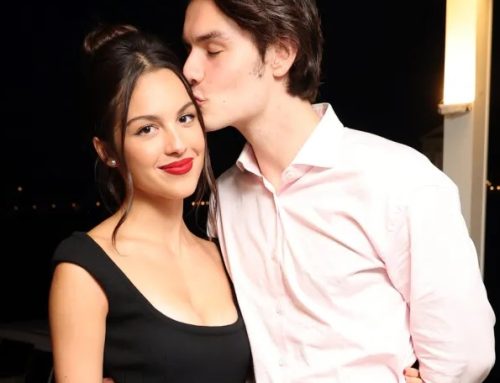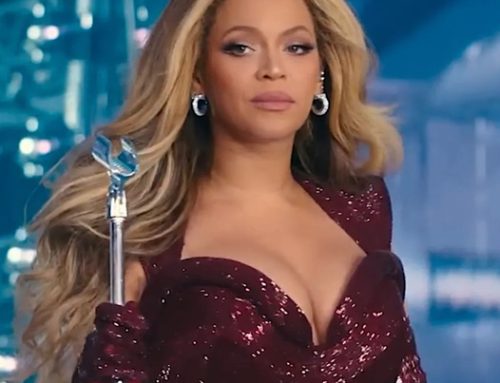Bursting with color and doubling as an LGBTQ call to action, Taylor Swift’s video for “You Need to Calm Down” — complete with cameos from Ellen DeGeneres, Todrick Hall, Laverne Cox, the cast of Queer Eye, alumni from RuPaul’s Drag Race and many more — has garnered 67 million views since its mid-June release. The extravaganza was co-directed by Swift and first-time collaborator Drew Kirsch, a Los Angeles-based director whose pedigree had previously been lower-budget clips from smaller acts with fervent followings, among them Bryce Vine, Blackbear and Wallows.
Exactly how Kirsch catapulted into co-directing a blockbuster video for one of the biggest pop stars in the world is apparent from taking a look at his vivid videography. Full of retro imagery and quirky scenarios, his past work seems tailor-made (no pun intended) for the attitude behind Swift’s shimmering and joyful campaign for her seventh studio album Lover, set for release next month. For Kirsch, who considers himself, in part, a pop art film director, it’s an aesthetic he’s worked at cultivating for years. “I want people to look at my work and screenshot images and put them on their wall or Tumblr,” he says. “The goal is that each of my frames looks like a live painting.”
Born in La Jolla, California and raised in Reno, Nevada, Kirsch was introduced to the art of filmmaking early on when he’d use his mother’s old VHS camera to craft short skate clips with him and his friends. But by high school, he pushed his interest in A/V aside. “I had no interest in anything besides partying in high school,” he remembers. “I wasn’t into the arts and where I grew up it wasn’t cool to be creative. I really cared about what people thought about me back then.” By 18, Kirsch headed back to California, this time to attend Cuesta College, a community college about four hours north of Los Angeles in San Luis Obispo. Void of direction, he experienced what he calls a “quarter life crisis” about what to do for the rest of his life. “I wasn’t good at anything and felt that way almost my whole life. I was never the best at sports and never had a calling. The real world had hit me.”
Searching for answers, Kirsch points to a Cuesta English teacher named Kymba Bartley who turned his life upside down. “I remember she called me out my first day and put me in my place,” says Kirsch. “She essentially opened my mind over the next few weeks and expanded my view of a whole world I had never even seen.” Bartley’s curriculum at the time included reading books like Chuck Palahniuk’s Fight Club (which would later become Kirsch’s favorite movie), as well as analyzing documentaries and film. “I was mind-fucked,” says Kirsch, who at one point enrolled in another Bartley class just to hear her insight into the creative mind. “She got me into the mindset of exploration and after that I took a welding, photography, design, painting and film class to see what stuck.” It was the film class that made the most impact (his professor was incredulous that he wasn’t more experienced after seeing his early work) and it was Bartley who encouraged Kirsch to apply to film school. “She had the thought of, ‘Who says who have to (follow a life plan of) go to school, get a job, buy a house, start a family? What are you going to do that’s going to make you happy?'”
Kirsch moved down to Los Angeles in the hopes of attending UCLA, but instead wound up taking an internship at USA Today Sports. It was around this time he made a video for a friend’s wedding. “He was like, ‘This is so good. You should make a music video.’ I was like, ‘A music video? Who watches those anymore?’ I liked music videos, but I had no interest in that. I just wanted to make feature films and tell a story; not film some guy rapping into the camera.” Even so, he was connected to the rapper Young Jinsu and — contrary to his prior feelings — directed his first video for him. “I sat in my room and edited all night. These guys I was living with at the time sat behind me and were going wild. We did it for nothing and it looked awesome.”
After cutting his teeth in the underground rap circuit, Kirsch soon linked up with a like-minded creative group of people dubbed The ANTI Society, including rapper David Sabastian. “We’d all help each other out and then I started shooting a lot of videos for him,” says Kirsch who credits Sabastian with inspiring him to further flex his creative muscles. “We were pushing the bar in terms of guerrilla filmmaking and that’s a big part of everything I do now,” says Kirsch. “David opened up my mind to being more creative and seeing things a bit differently.”
It’s that penchant for seeing things differently that is a through-line in much of Kirsch’s work. “I’d like to think that if you see a video online, you’re gonna know it’s me,” says Kirsch, who favors a string of unique imagery, especially color and food. “If you look at all of my videos, they all have food somehow,” he says. “I like the way certain foods look on camera: eggs, milk or raw meat. I don’t know why, but if you took a hundred bananas and put them in a room, I’d freak out and be like, ‘Someone should lay on them!’ I just think it’s so beautiful, and most of the time it doesn’t mean anything; it’s just an aesthetic.”
Case in point to Kirsch’s food motif: SpaghettiOs, shrimp and cake all make appearances in “You Need to Calm Down.” Even the blender in the video is a recurring item featured in many of Kirsch’s videos, and has its roots in the karaoke-inspired Wallows video for their recent single “Are You Bored Yet?” “There were originally talks about getting different item, like a boiling pot of water or milk overflowing and it spazzing out of control,” says Kirsch of collaborating with the indie pop band. “The reason we got a blender is that we could rig it easier to make milk jump out of it.” Another quirky image stems from Bryce Vine’s clip for his 2016 single “The Fall.” “The most talked-about image I ever shot was probably the cigarette being put out on a fried egg in that video.”
The response to this new video, naturally, was immediate. “Since ‘You Need to Calm Down’ came out, I’ve been getting a lot of emails and a ton of support from friends and family,” says Kirsch. And with the monster success of “You Need to Calm Down” behind him, he’s now setting his sights on feature films. “Features have always intrigued me because I’ve wanted to tell a longer story that has an impact on people,” he says. “Just like films have had an impact on me.”





















